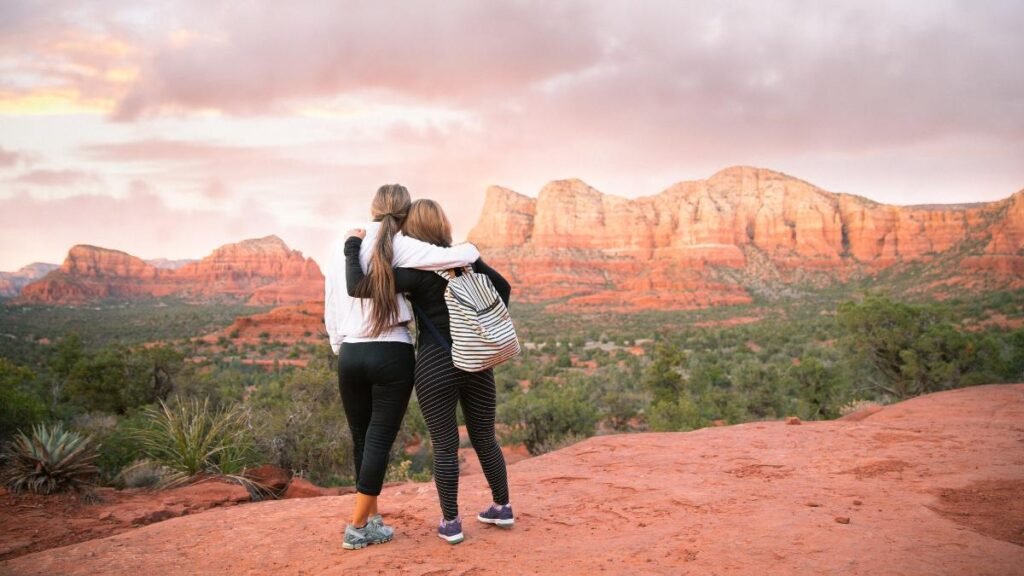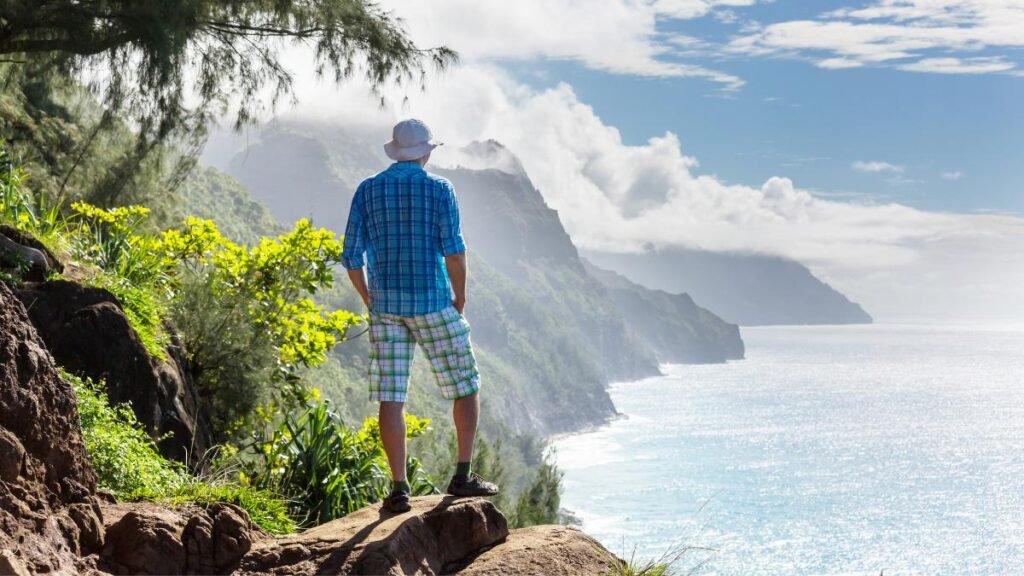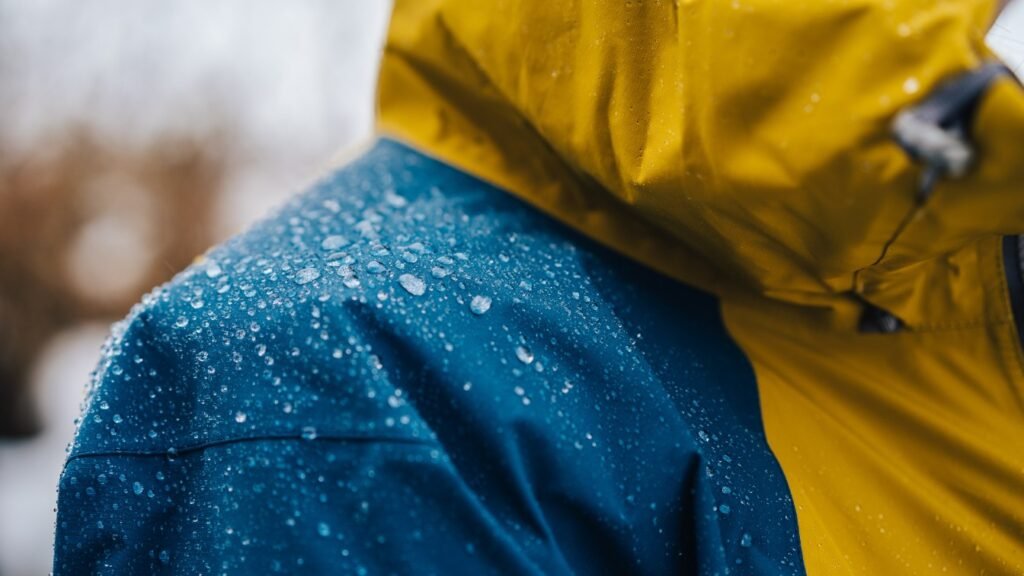With over 254 trails to choose from, including the iconic Devil’s Bridge Trail and Cathedral Rock Trail, Sedona offers an unparalleled hiking experience.
But knowing what to wear hiking can be challenging due to its unique climate and terrain, not to mention Sedona’s elevation is 4,500 feet, which can impact weather and your outfit needs.
This guide will provide you with practical advice on what to wear while hiking in Sedona. Stick around, because being prepared means you can focus on enjoying the stunning views, not fretting about your outfit.
A Year-Round Checklist: What to Wear Hiking in Sedona?
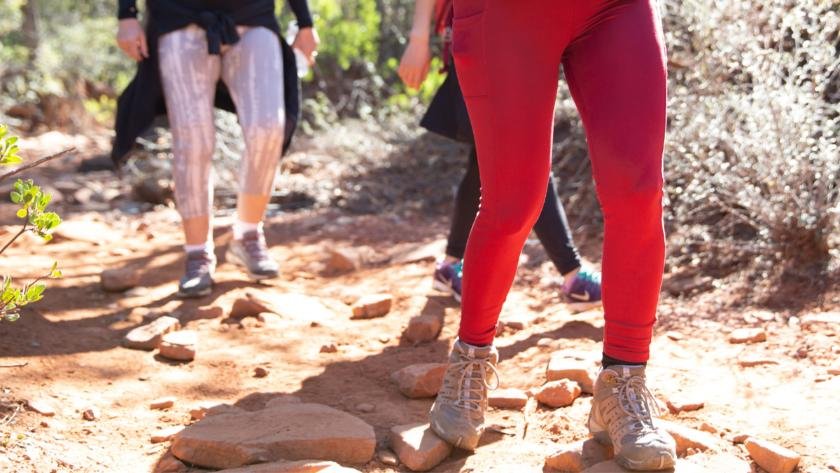
Here’s a comprehensive and versatile list of what to wear hiking in Sedona that will suit you well in every season:
- Hiking Boots: A good pair of hiking boots is essential for any hiking trip. They protect your feet and provide support on uneven terrain.
- Convertible Pants/Shorts: These are ideal for fluctuating temperatures as they can be converted from long pants to shorts as needed.
- Breathable Long Sleeve Shirt: A breathable long-sleeve shirt can protect you from the sun while also keeping you cool.
- Tank Tops or Short-Sleeved Shirts: These are great for hotter days when you’re walking around town or hiking.
- Puffy Jacket: This can be useful for colder weather or for when the temperature drops in the evening.
- Sandals: These are nice for casual walks around town after a day of hiking.
Hiking Boots and Shoes
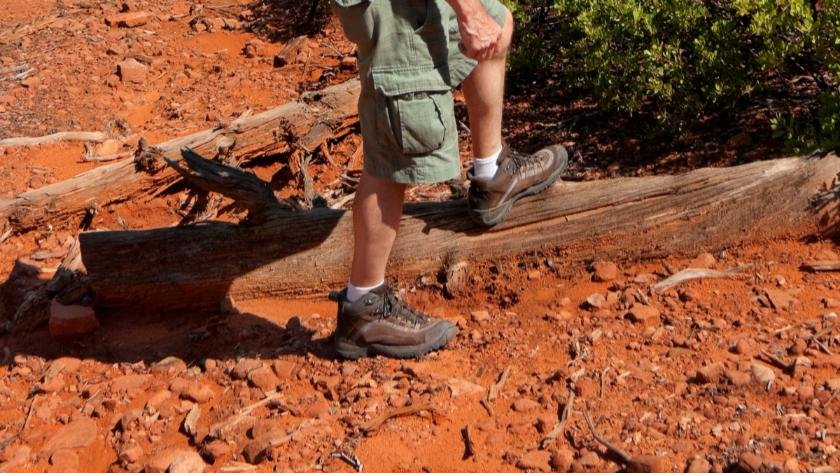
Sedona’s landscape is a kaleidoscope of dusty paths, sandy stretches, slick rock surfaces, and rocky terrains. Each of these elements presents unique challenges that can be tackled efficiently with a sturdy pair of hiking boots.
Hiking boots provide excellent:
- Ankle support
- Stability
- Protection
When you’re navigating through the uneven paths of Soldier’s Pass or the steep inclines of Cathedral Rock, this support can make all the difference. The ankle support in hiking boots helps prevent sprains or twists, especially on rocky terrains.
Trail Runners vs. Hiking Boots
While some hikers prefer trail runners for their comfort, hiking boots have an edge when it comes to durability and protection. Trail runners are lightweight and comfortable but may not provide the same level of protection as a sturdy pair of hiking boots.
Convertible Pants/Shorts
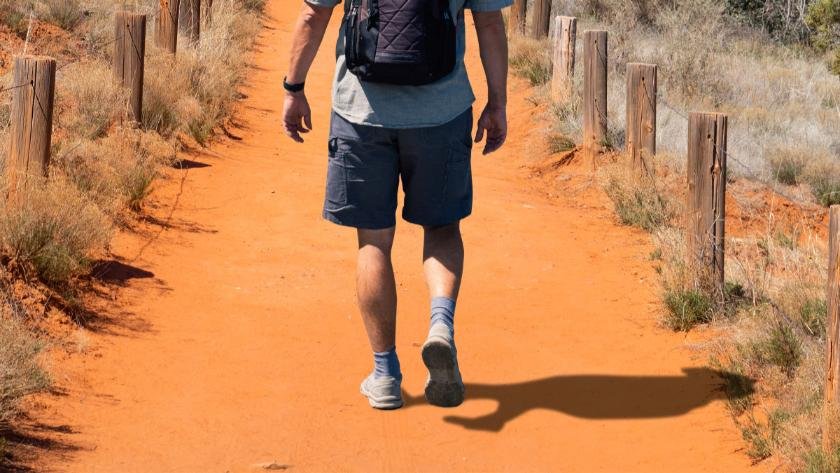
Convertible pants, sometimes referred to as zip-off pants, are a versatile option for any hiker. They can quickly transition from long pants to shorts and vice versa, thanks to zippers usually located around the knee area. This feature is particularly useful when hiking in Sedona, where temperatures can fluctuate considerably throughout the day.
When selecting a pair of convertible pants for your Sedona trip, think about options that are quick-drying and lightweight. These features will add to your comfort, especially during summer hikes.
Also, it’s worth investing in a pair with good ventilation, as this can help regulate your body temperature during those in-between weather moments.
Breathable Long Sleeve Shirt
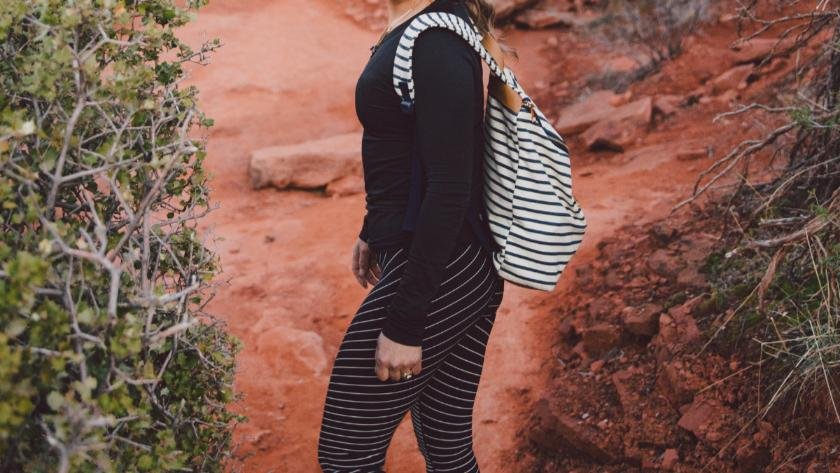
Sedona is known for its hot, dry climate, especially during the summer months. The average high temperature in July is around 97 degrees Fahrenheit. That’s pretty hot! But even on cooler days, the dry desert air can make you feel warmer than the actual temperature.
A breathable long sleeve shirt comes in handy here. It helps regulate your body temperature by allowing air to circulate, keeping you cool even in warm temperatures. This is especially beneficial when you’re exerting yourself on a challenging trail, such as the Boynton Canyon Trail.
Pro Tip: Look for shirts with a loose fit. This allows for maximum mobility and comfort on the trail.
Tank Tops or Short-Sleeved Shirts
Short-sleeved shirts or tank tops are ideal for hikes in this area. But if you’re wearing a tank top, make sure your backpack straps don’t rub against your bare skin – it nagged me a few times during my trip.
Choose shirts made from moisture-wicking materials. They’ll pull sweat away from your body, helping you stay cool and dry.
Puffy Jacket
Multi-layered clothing, including a puffy jacket, is one of the most effective ways to stay warm while hiking. And if you’re planning on enjoying Sedona’s star-lit skies (which I highly recommend), a puffy jacket will keep you cozy as temperatures drop after sunset.
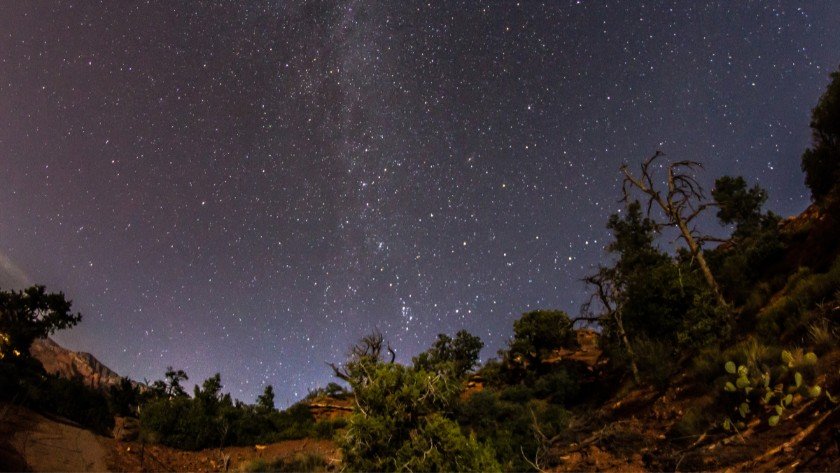
When choosing a puffy jacket, look for one with a high fill power rating which indicates the quality of the down insulation and how well it will keep you warm. Opt for a jacket with a durable water repellent (DWR) finish to protect you from unexpected rain showers.
Sandals
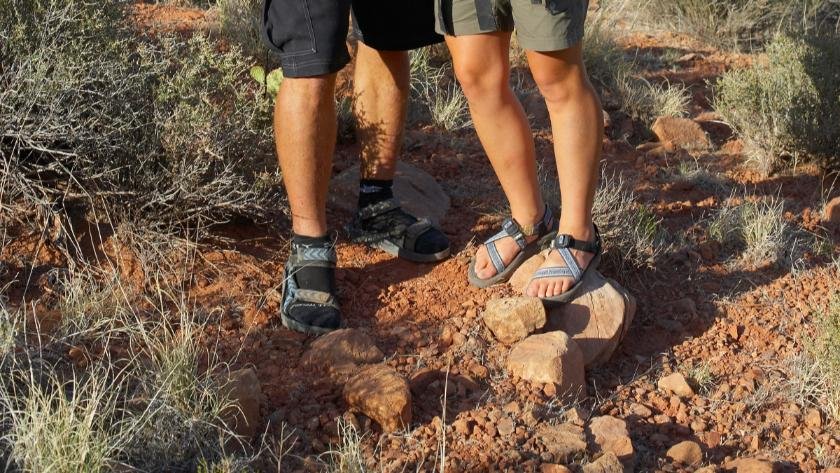
I’m not saying you should ditch your hiking boots and go for sandals instead. Hiking Boots are irreplaceable for many trails in Sedona which have steep inclines and loose gravel.
What I am suggesting is that you pack a pair of sandals ALONG with your boots.
Sedona is famous for its red rock formations and panoramic views. But what many people don’t realize is that it’s also home to numerous water crossings, particularly in areas like Oak Creek Canyon and the West Fork Trail.
Sandals dry quickly, offer excellent traction on slippery rocks, and prevent the uncomfortable squelching sensation you get when water seeps into your boots.
What to Wear Hiking in Sedona for a Day?
If you’re planning your hike in Sedona to take one day only, you’re not going to need as much gear. You won’t be setting up camp or braving the elements overnight. So, leave the heavy-duty stuff at home and focus on comfort and protection instead.
Here’s a simple checklist for you:
- Breathable hiking shirt: Opt for materials that wick away sweat and dry quickly.
- Hiking shorts or convertible pants: These provide flexibility and durability for navigating the trail.
- Sturdy hiking boots: Make sure they offer good ankle support and are broken in prior to the hike.
- Lightweight jacket: This will come in handy when the temperature drops in the evening.
- Rain jacket: Weather can be unpredictable, so it’s best to be prepared for sudden showers.
- Hat: A wide-brimmed hat will protect you from the sun.
Dressing for a day hike in Sedona doesn’t have to be complicated. Keep it light, protect yourself from the sun, and always be prepared for a change in weather.
Hiking in Sedona: Season-by-Season Outfit Guide
The time of year plays a significant role in deciding what to wear while hiking in Sedona. Each season presents unique conditions that require different types of clothing. In this section, I’m going to give you the lowdown on exactly what to wear and when.
Spring
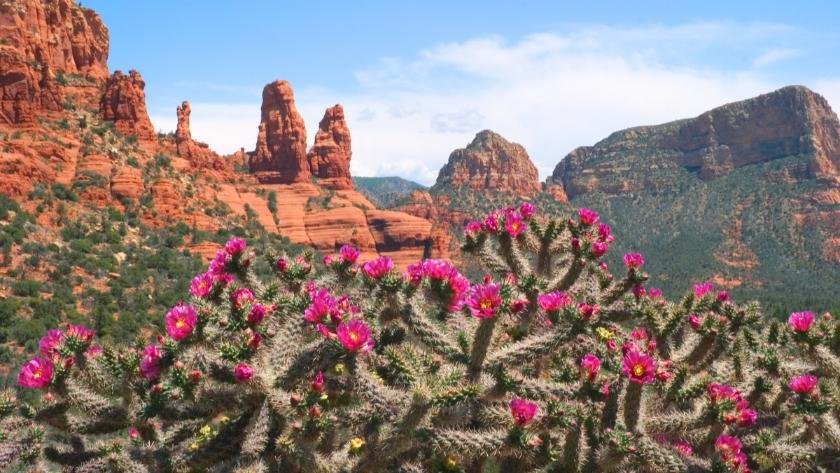
Sedona is one of the most popular places to visit in spring. Everything is in bloom, and the temperature range is just right, making it a hiker’s paradise!
In spring, Sedona boasts of daily high temperatures that increase by 24°F, from a comfortable 62°F to a warm 86°F. It’s not often that it falls below 50°F or exceeds 95°F, so you’re looking at pretty mild weather overall. The skies are mostly clear, bringing an abundance of sunshine.
What to wear hiking in Sedona during spring? Here’s my recommended packing list:
- Lightweight, breathable clothing: T-shirts and shorts work great.
- A light jacket: The nights can drop to about 45 degrees F, so it’s handy to have one.
- Hiking boots: These are a must for the rocky terrain.
- Sunglasses, hat, and sunscreen: Protect yourself from the sun’s rays.
Summer
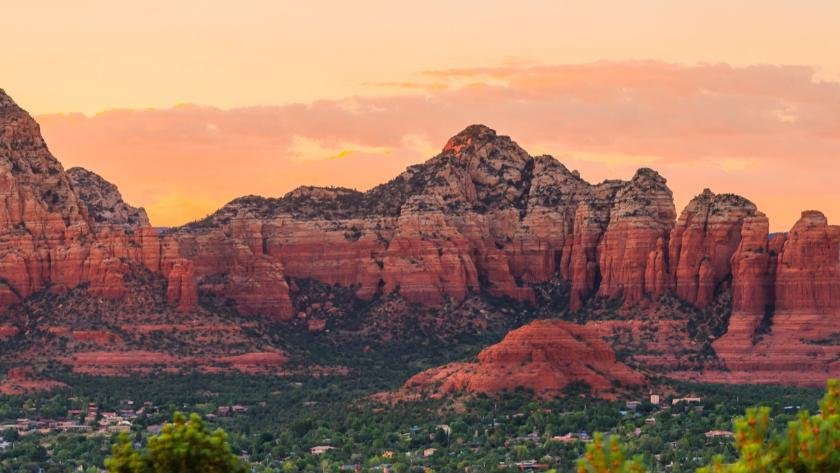
Sedona is famously known for its scorching temperatures, often soaring to an average high of 97°F in July. But don’t let that deter you, because with the right gear, you can conquer those red-rock trails like a pro.
What to wear hiking in Sedona during summer?
- Lightweight, breathable clothing: Opt for long-sleeved shirts and pants to protect you from the sun. Synthetic materials work best as they wick away sweat and dry quickly.
- A wide-brimmed hat: This will shield your face and neck from the sun. Trust me, you’ll thank yourself later.
- High-quality hiking boots: Choose ones with good ankle support and a sturdy grip for those slippery trails.
- Sunglasses: They protect your eyes from harmful UV rays. Polarized ones are the way to go!
- Sunscreen: SPF 50 or higher, please! Your skin will appreciate it.
Start your hike early in the morning or late in the afternoon to avoid the peak heat hours. Also, always check the weather forecast before heading out. Flash floods are common in this area during the monsoon season (July – September).
Pro tip: If you’re not used to triple-digit heat, avoid hiking in the peak summer months. Stick to spring and you’ll have a much more enjoyable experience.
Fall
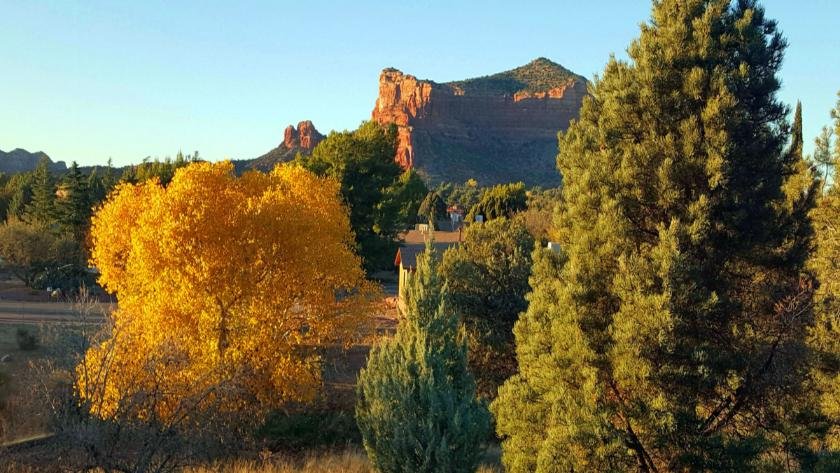
Planning a hiking trip to Sedona in the fall is a fantastic choice! Sedona has a semi-arid climate. Fall temperatures range from 60°F to 80°F during the day and can drop to 30°F to 50°F at night. The trick is to dress in layers that can be easily removed or added as needed.
What to wear hiking in Sedona during fall?
- Breathable Base Layer: Start with a moisture-wicking shirt to keep you dry and comfortable. Polyester or merino wool are excellent choices.
- Insulating Mid Layer: A fleece jacket or vest will provide warmth without adding much weight.
- Protective Outer Layer: A lightweight, water-resistant jacket will protect you from unexpected rain showers or wind.
- Hiking Pants: Choose quick-drying, lightweight pants. Convertible ones that can be zipped off into shorts are a versatile option.
- Hiking Boots: Waterproof, sturdy boots with good ankle support are a must. Break them in before your hike.
- Hiking Socks: Opt for moisture-wicking socks made of wool or synthetic material. Avoid cotton as it retains moisture.
- Hat and Sunglasses: Protect your eyes and face from the sun. A hat with a wide brim is ideal.
- Gloves: Lightweight gloves can be handy for chilly mornings or evenings.
Don’t forget, Sedona’s high desert location means the sun can be intense, even in fall. Apply sunscreen regularly, even if it’s cloudy.
Winter
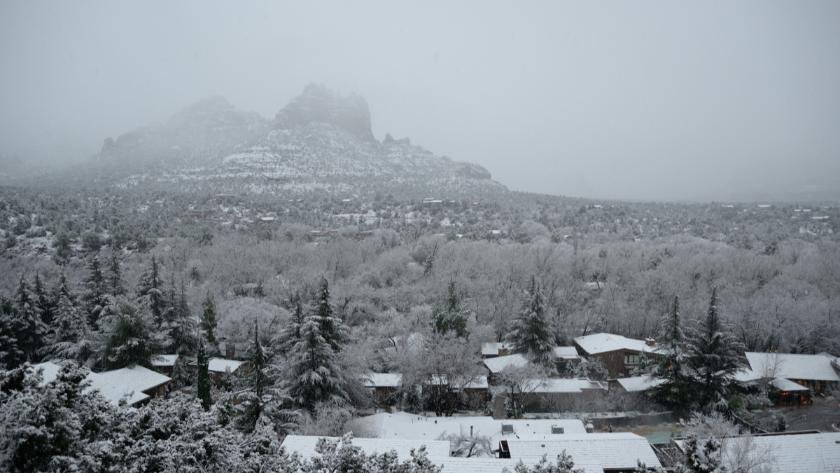
Winter in Sedona is a pleasurable experience, with daytime temperatures averaging around 56°F (13°C). It’s not uncommon for the temperature to drop significantly as night falls, creating a chilly environment that can catch you off guard if you’re not prepared.
Despite its desert location, Sedona also sees about 3 inches of snow each year, mostly in January and February.
What to wear hiking in Sedona during winter?
- Thermal Base Layers: They’ll keep you warm without adding bulk. Go for breathable materials like merino wool.
- Insulating Mid-Layers: Think fleece jackets or wool sweaters. They trap heat and provide additional warmth.
- Weatherproof Outer Layer: A waterproof and wind-resistant jacket will shield you from unexpected showers or chilly winds.
- Hiking Pants: Choose water-resistant and quick-drying materials. Avoid jeans – they stay wet and can make you cold.
- Hiking Boots: Make sure they’re waterproof, sturdy, and broken-in before your trip.
- Accessories: Don’t forget a hat, gloves, and a scarf. And sunglasses – the sun can be surprisingly strong, even in winter.
There’s nothing quite like seeing Sedona’s red rocks dusted with fresh snow. It’s a sight that’s well worth braving the cold for. Just make sure you’re dressed for the occasion!
What is the Best Month to Hike in Sedona?
The best month to hike in Sedona is October. The fall leaves in Oak Creek Canyon provide a beautiful backdrop, and the weather is usually dry and comfortable. In fact, October is often hailed as one of the best times for hiking due to the mild temperatures and lower risk of rainfall.
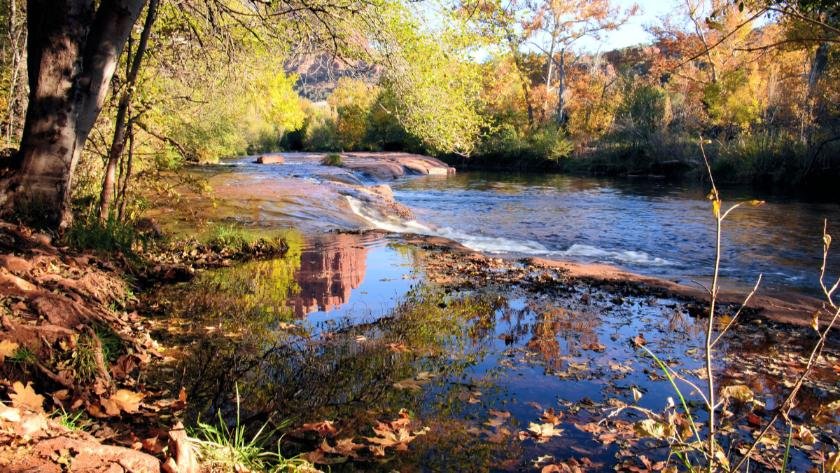
Hiking in Sedona is also very pleasurable from March to May (If you’re looking for ideal weather and don’t mind sharing the trails). During these times, the weather is just right – not too hot, not too cold – nearly perfect for hiking.
But if you prefer a quieter experience, you might want to consider hiking in Sedona during the winter. Sure, it could be a bit colder, but you’ll have the trails more or less to yourself, allowing for a serene and peaceful hike.
Regardless of when you decide to visit, remember to start your hikes early, especially during the summer months. This way, you can avoid the heat of the day and any possible monsoon activities.
Hiking in Sedona: Optional Accessories
Here’s a list of accessories you should consider bringing for your hiking adventure in Sedona:
- Sunglasses: Protect your eyes from the glare of the sun.
- Sun Hat: A wide-brimmed hat can provide added protection from the sun.
- Sunscreen: The sun in Sedona can be strong, so it’s important to protect your skin.
- Lip Balm with SPF: This will help prevent your lips from getting chapped.
- Snacks: Bring some light snacks to keep your energy up during your hike.
- Day Pack or Backpack: This is where you’ll store all your essentials.
- Multi-Tool: A compact tool that includes a knife, scissors, and more can come in handy.
What Do I Need to Know Before Hiking in Sedona?
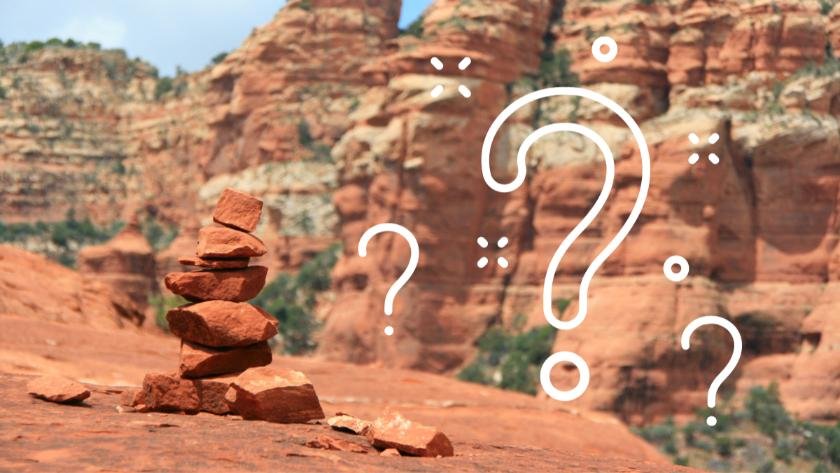
Before you set off on your adventure to Sedona, here’s what you need to know.
Hydration is Key
Sedona can be quite dry, with average humidity levels often below 40%. So, I advise you to always carry a water bottle, preferably one that can hold at least 2 liters. About one liter for every two hours of hiking is a good rule of thumb.
Pack a Map or a GPS Device
The terrain in Sedona is beautiful but can be quite challenging. The trails are filled with steep inclines, sharp rocks, and sometimes slippery surfaces. Don’t forget to pack a map or a GPS device to navigate the trail.
Stick to the Marked Trails
Sedona is famous for its red rock formations, some of which are over 300 million years old. Take your time to marvel at these natural wonders, but remember to respect the environment. Stick to the marked trails and avoid disturbing the local flora and fauna.
Final Thoughts
As we wrap up our hiking chat, I want you to remember that Sedona’s trails are a wonder to behold. There’s nothing quite like it. So, when you’re out there, make every step count.
Dress smart and be prepared. Now, I’m not saying you need to go out and buy the most expensive gear on the market. Far from it! But investing in a few key pieces can make all the difference. A sturdy pair of hiking boots, breathable clothing, and a reliable backpack are all good places to start.

